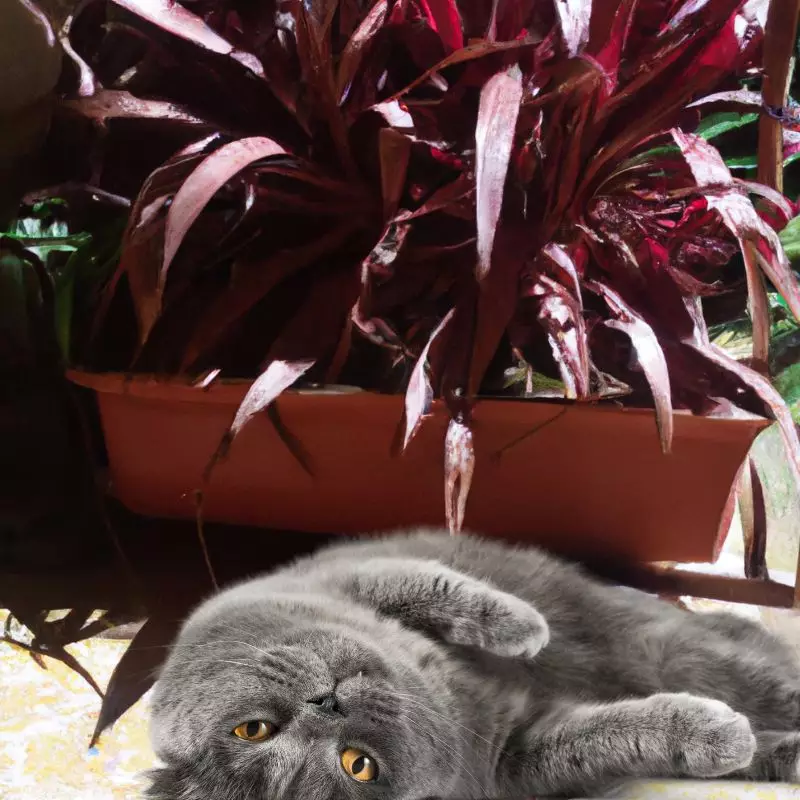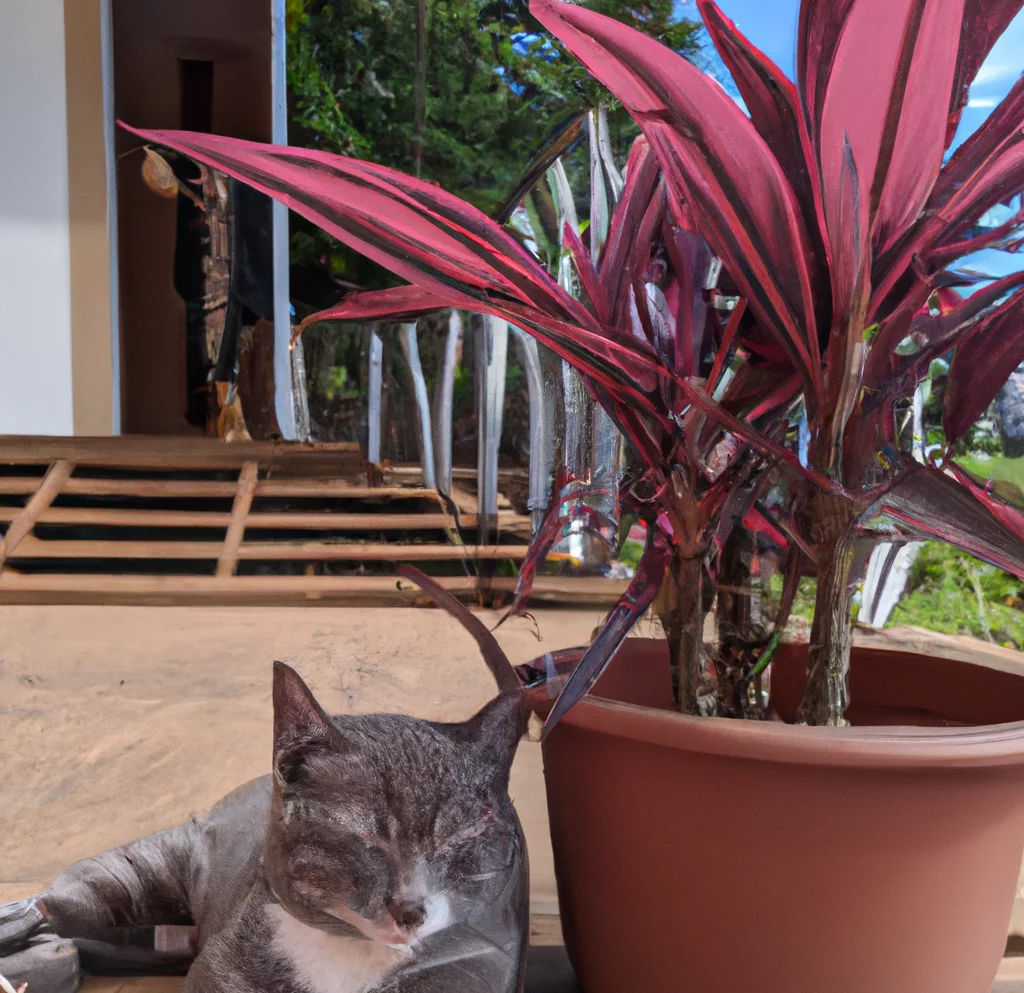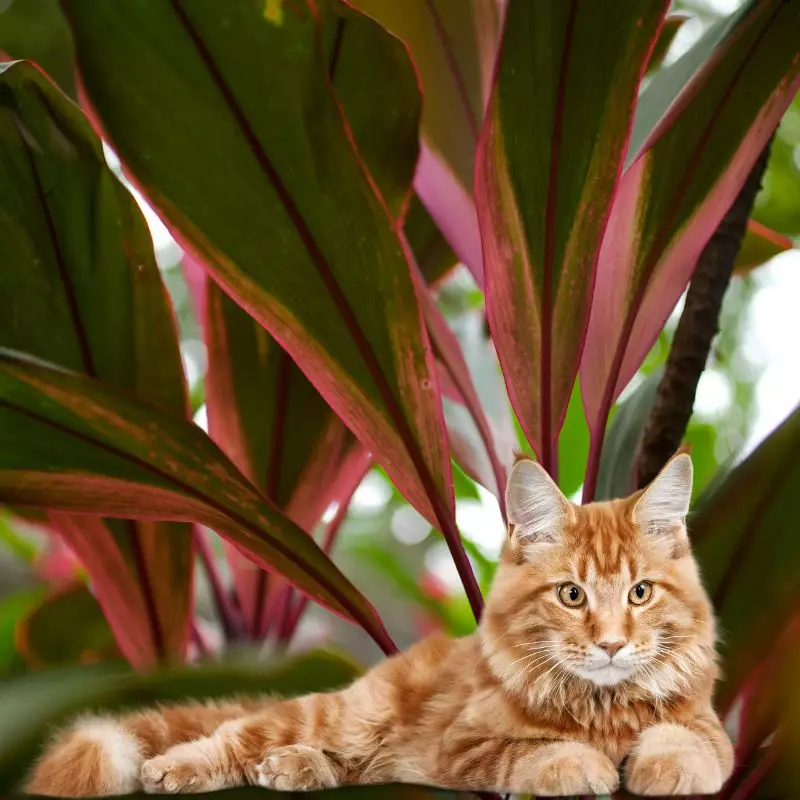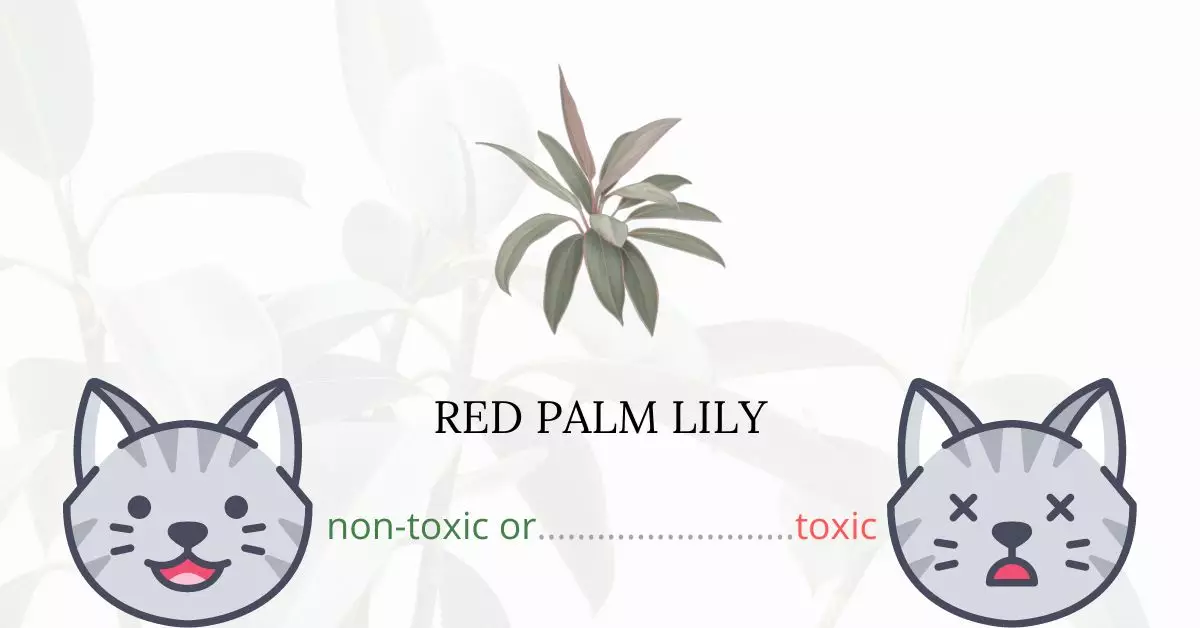The red palm lily is considered non-toxic to cats.
In collaboration with a team of experienced DVMs (doctors of veterinary medicine), this article provides an in-depth and accurate perspective on the potential risks associated with the Red Palm Lily and its effects on feline companions. Our research includes high-authority websites such as the ASPCA (American Society for the Prevention of Cruelty to Animals), which has listed the red palm lily as one of the non-toxic plants for cats, as well as dogs and horses. Moreover, referencing sources like PetMD further confirms the safety of this plant for cats.
However, it’s essential to note that just because a plant is non-toxic does not mean cats should be allowed unrestricted access to it or other plants without supervision.
Can Cats Eat Red Palm Lily?

Cats may be drawn to the red palm lily’s long, wavy leaves. They may also feel compelled to attack and bite the plant. If this is the case, one bite of the plant will cause no harm. What should worry you is if your cat has consumed a large amount of red palm lily.
Anything too much is not good and the same goes for cats’ consumption of plants. If they eat too many plants, they can have an upset stomach or develop other gastrointestinal issues. This is because they are natural carnivorous species. Carnivores cannot tolerate too many herbs in their bodies because they do not have the proper enzymes to metabolize them. Thus, it leads to experiencing indigestion.
What is Red Palm Lily?

Cordyline Rubra is the scientific name for red palm lily. It grows as a shrub up to 4 meters (13 feet) tall. It is endemic to Australia and is commonly found in moist eucalyptus forests and warm rainforests.
Red palm lily is distinguished primarily by its leaf stems, which range in length from 5 to 20 cm (2-8 in). They have a flat or slightly concave shape. The narrow elliptic leaves are 15 to 50 cm (6-20 in) long and 3 to 5.5 cm (1.4-2.2 in) wide.
The plant produces summer flowers that are lilac in color. It also produces fruit that is a bright red berry 10 mm (0.4 in) in diameter. They grow on panicles ranging in length from 10 to 40 cm (4-16 in).
Keeping Cats Away From Red Palm Lily

With the right incentive, you can teach your cat to leave your plants alone and redirect them to different behavior.
Distracting and redirecting is the most effective training method. If you catch them looking at a plant, call them away or pick them up and put them as impartially as possible on the floor.
Another excellent option is Sticky Paws tape or double-sided adhesive tape. Get an inexpensive plastic placemat, cut it to fit the size of your pot, and stick the tape to it. This results in a sticky surface that your cat will not want to walk on.
Plants to Avoid For Your Cats
If you are a cat owner and unsure if the plants growing in your yard are harmful to your cats, check out this list of toxic plants for cats. You can also check our list of non-toxic plants for cats.





